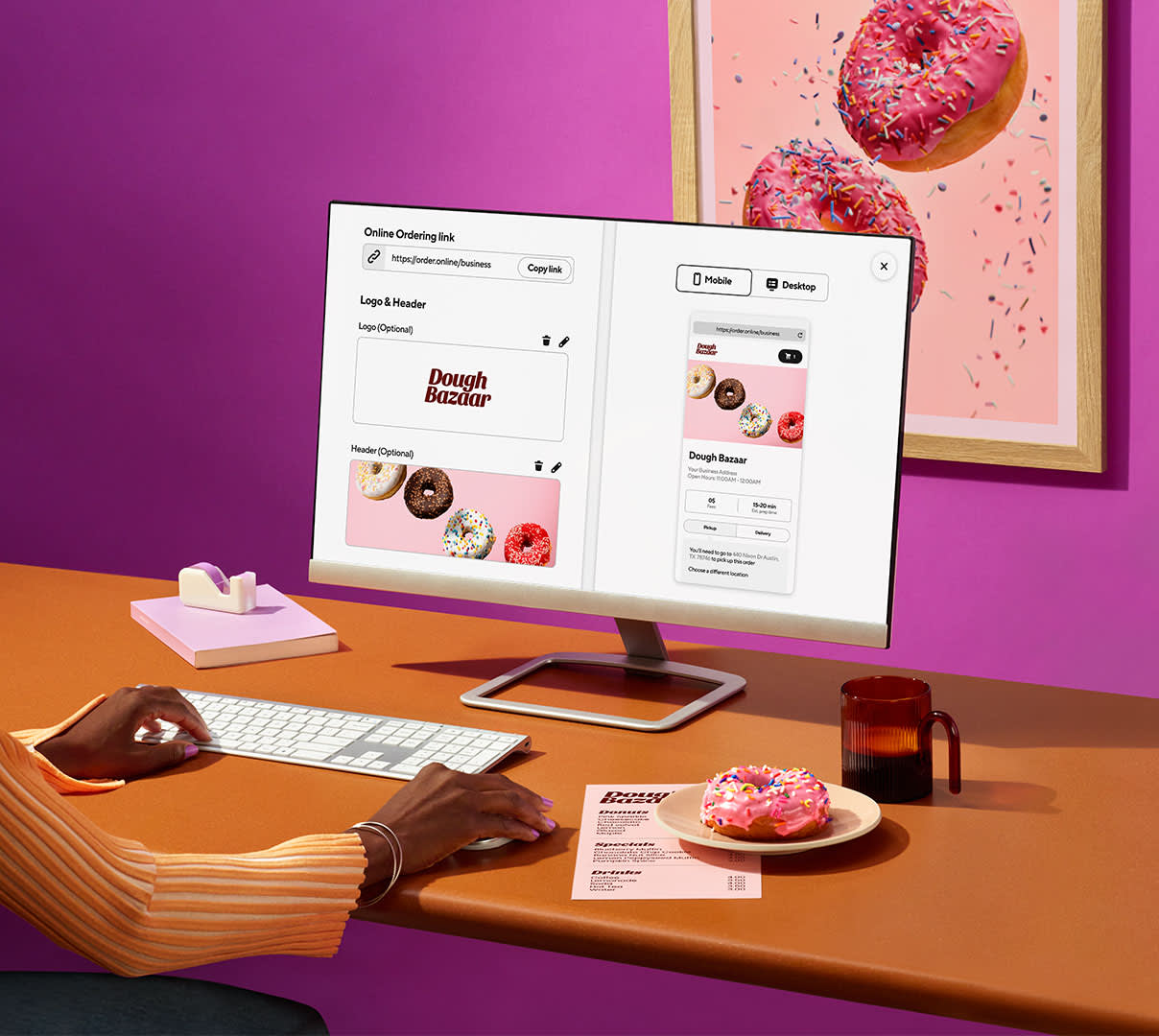As a restaurateur, you know that first impressions are everything. Whether potential guests are walking past your restaurant looking for a delicious dine-in spot or perusing the delivery and pickup options on your website or a third-party app, you have to capture their attention quickly.
Menu selection is the top reason why diners of all age groups will try a new restaurant, according to the 2024 Restaurant & Alcohol Online Ordering Trends Report, and your menu is your first opportunity to wow customers. This is especially true online since potential customers aren't experiencing the views, ambience, or pleasant staff they would when dining in. A mouthwatering menu helps your restaurant stand out among competitors, attract new business, and encourage previous customers to come back for more.
Here, we've rounded up seven tips on creating an inviting online restaurant menu that caters to everyone, taking inspiration from restaurant menu examples that go above and beyond to satisfy customer cravings and increase profits.
1. Feature mouthwatering photography
A high-definition photo of a vibrant salad with fresh ingredients or cheese melting over hand-cut fries doesn't just make your stomach rumble. In fact, menus with photos get up to 44% more monthly sales, according to DoorDash data. In fact, 38% respondents across all age groups consider food photography to be an important factor when deciding to try a restaurant. Healthy fast-casual chain Modern Market's menu photography uses bright colors and a bird's-eye view to showcase their signature dishes.
Optimize your menu's design with photos that are appealing and representative of the dish being served. The presentation, lighting, and angles are important considerations — but consistency and authenticity matter too. Your customers should be able to see a dish online and receive the same presentation and quality in real life every time they order.
Unsure how to capture your dish in the best light with visually appealing menu photography? Partner with DoorDash and get a free professional photo shoot to help you market your offerings more effectively.
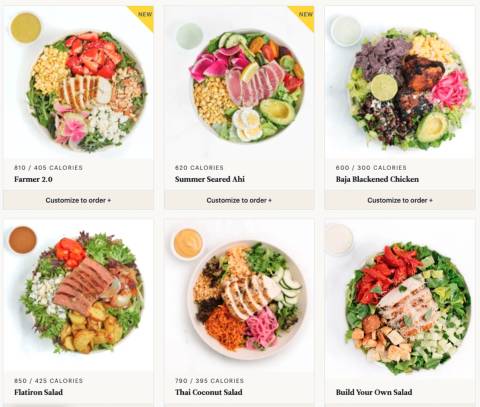
2. Use delicious, descriptive language
Appetizing photography is a great way to enhance your online restaurant menu — but you shouldn't stop there. Your dishes tell a story, and so should your menu descriptions. Give customers insight into the ingredients, preparation, and flavorful taste of your food with hearty descriptions that answer the questions they might have asked their waiter when dining in-person.
Note how the dish is prepared, then share its popularity, origin, or unique flavor with descriptive adjectives and playful verbs. While it's easy to get carried away talking about food, remember to keep your descriptions short to avoid information overload.
At Bellingham, Washington-based AB Crepes, the food descriptions are short and sweet — yet still creative. With witty dish names like "Wake N' Crepe" and "Crepe N' Daise," you're more likely to remember their brand too.
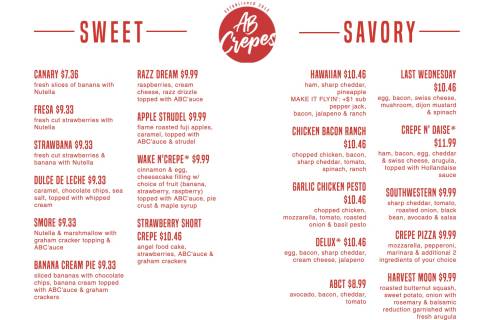
3. Create a mission-driven menu
Eating, preparing, and gathering around food has a lot to do with who we are and what we care about. Show customers your true colors with a mission-driven menu that highlights your core values and brand aspirations.
For example, the California seafood restaurant, Pacific Catch, offers a wide range of delicious food while subtly weaving environmental responsibility into their menu. They advocate for sustainable seafood that has been thoughtfully sourced, "from wave to table."

4. Experiment with menu engineering and pricing
The next ingredient in building the perfect menu? Analyzing the profitability and popularity of your menu items, then adjusting to meet the changing needs of customers, through menu engineering.
Begin by breaking down the cost of each of your dishes, ingredient by ingredient, to determine your expenses. Next, categorize menu items by profit and popularity levels to understand what you should remove from the menu or give extra attention to — this way, you can maximize profits and stock your kitchen accordingly.
Think strategically about how you include pricing on your menu too. Some online restaurant menus, like B. GOOD, focus on food and flavor — rather than how much customers are going to spend. Their website menu doesn't feature any dollar signs until you take action to order — so instead of worrying about spending, customers are first drawn to the delicious taste. Another pro tip? Round the prices of your dishes to the nearest whole number, rather than including decimal points — this will help with food cost percentage.
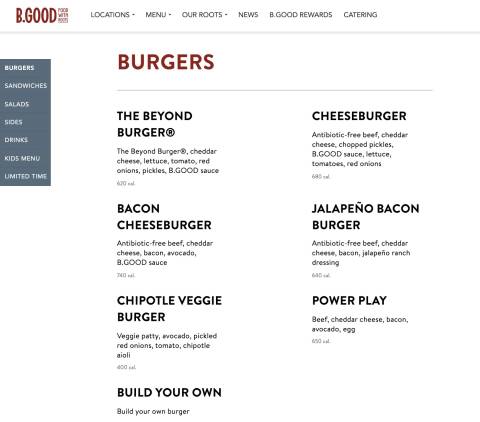
Adjust the pricing for dishes according to wholesale costs of food items, the cost of labor and plating, market volatility, customer perceptions, as well as demand and competition. Keep these insights in mind going forward, while also recognizing how your customers' cravings change over time.
5. Promote your menu options on social media
There's a reason why #food is one of the top 50 most-used hashtags on Instagram — people love seeing and sharing tasty photos and videos. In fact, 19% of consumers use restaurant social media channels and 17% turn to social media influencers when looking for new restaurants, so it's important that your restaurant is prepared with a strong social media presence.
Playa Bowls does an excellent job of this, with vibrant menu photography and evocative captions that leave customers thinking: "I need to try this." Create a brand voice and visual design that is consistent across your website and social media channels, so customers learn what to expect from you.

6. Strengthen your website menu and online ordering
Your online restaurant menu needs to accommodate customers with a user-friendly website and online ordering platform. Nearly one in three consumers in the US and Canada prefer ordering delivery from a restaurant's website or app directly, according to the 2023 Restaurant Online Ordering Trends Report.
With DoorDash Online Ordering, you can set up a commission-free online ordering solution to build your brand and drive customer loyalty. Grow your business with unique features like a Smart “Order Now” Button displayed on your website and item-level ratings. Personalized loyalty and gift card programs also encourage customers to come back again and again.
Port of Peri Peri's Online Ordering menu is organized according to their unique offerings: small bites, signature chicken, veggie delights, lamb specialties and more. Customers can order pickup or delivery with this visually appealing and easy-to-use setup.
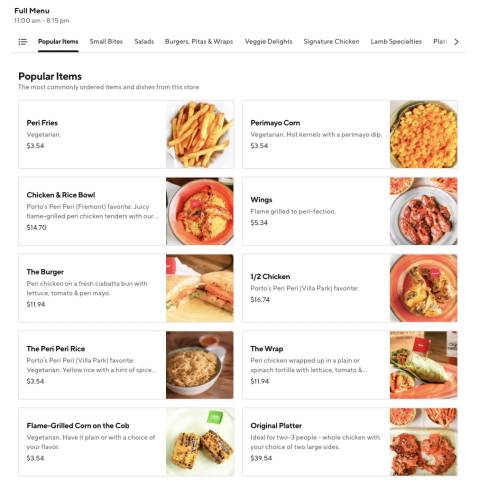
When designing your website menu, be sure to also consider SEO best practices so more customers can find your restaurant. One easy strategy for improving your rankings is including keywords in page titles and descriptions. Wondering where to get started? Learn how to improve your restaurant's ranking on Google Search.
7. Bolster your delivery menu with your best items that travel well
Last but not least, be prepared with a thoughtful delivery menu. In the 2024 DoorDash Restaurant & Alcohol Online Ordering Trends Report, 70% of survey respondents ordered delivery in the past month.
Adjust your delivery menu to focus on higher-margin items, best-sellers, and dishes that travel well. Lighten your team's load by offering items that can be prepped in advance — and avoid sogginess at all costs with proper packaging and testing beforehand.
You can also increase order sizes by offering add-ons to your menu, including meal kits, family-style meals, dinner for two, and alcohol— not to mention popular categories like sides, desserts, and other drinks.
Naan and Kabob, a Great Toronto Area-based business offering authentic Afghan food, is the perfect example of this. Their Online Ordering delivery menu offers a wide range of add-ons and unique categories, including group platters, signature dishes, grilled kabob plates, kids' meals, and catering options.
Online Ordering can help you increase sales with recommended add-ons and modifications, features like on-page checkout, and rich menu photos and descriptions — so your delivery menu satisfies everyone.
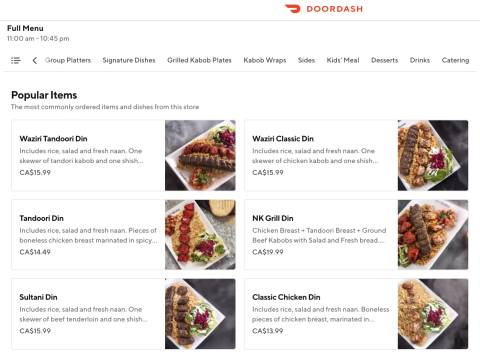
Enhance your online restaurant menu and increase profits
The main ingredient in building the perfect menu for every customer? Seeking out their feedback and observing trends as their cravings inevitably change.
With DoorDash's Merchant Portal, you can see what customers want by tracking your sales, analyzing your menu's top-performing items, and responding to customer feedback. High-quality customer service is equally important for off-premise customers, so be sure to respond regularly to earn a higher rating as a Most Loved restaurant — and inspire new business along the way.
With your menu designed, you can use Online Ordering to offer commission-free online ordering directly through your website, native apps, social media, and Google page. Ready to get started? Schedule a demo of Online Ordering, included in every DoorDash partnership plan. Not a DoorDash partner yet? Start your free trial today.
